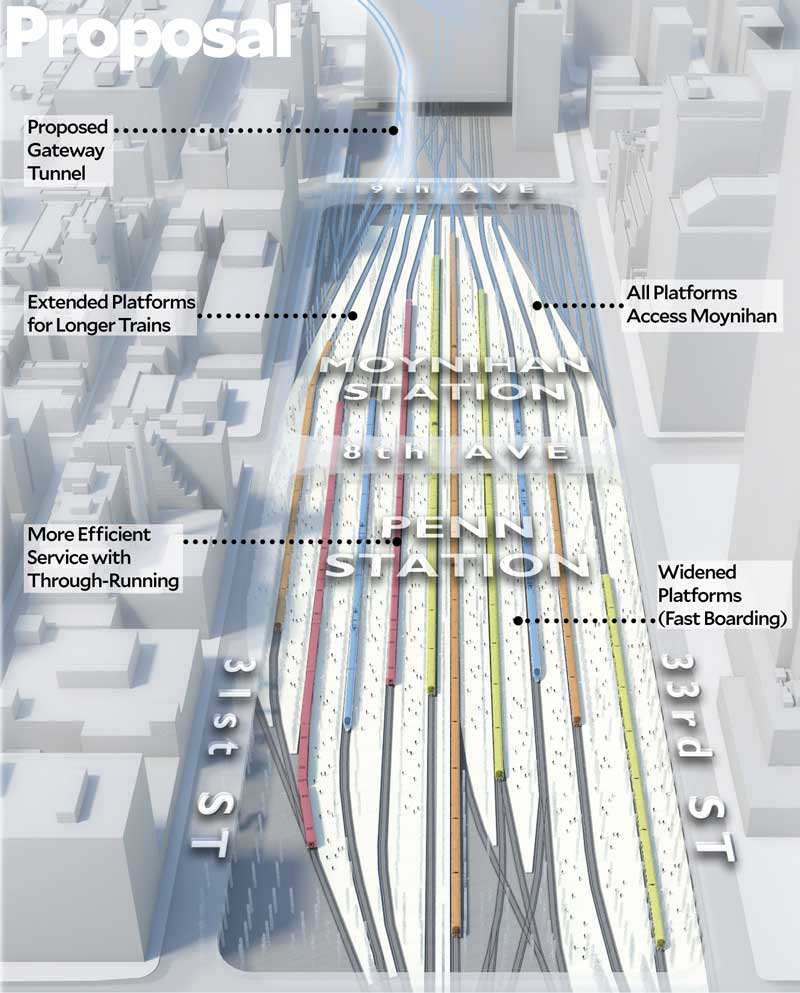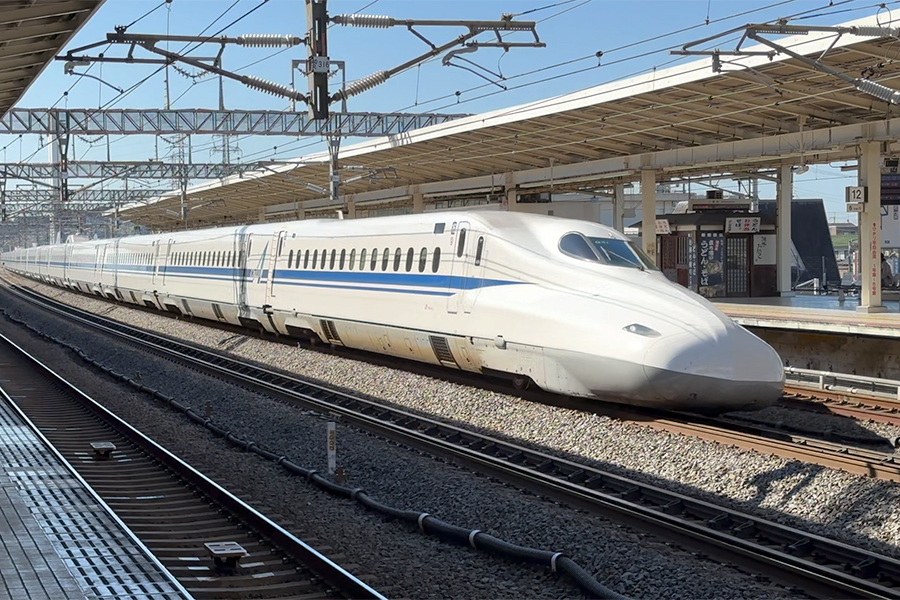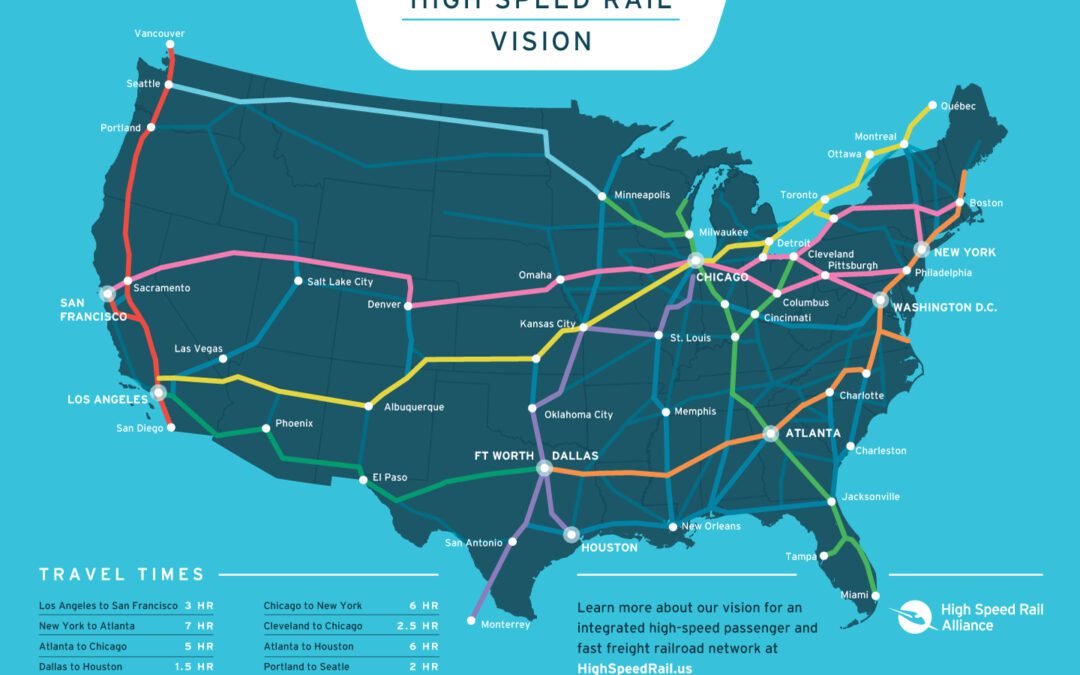Traveling last Friday through Iowa and Illinois, an eastbound Amtrak California Zephyr showed little or no sign of being affected by the CrowdStrike glitch and the cascading computer outages that followed. A morning announcement advised travelers that the café car...
Proposed renovation plans for New York’s Penn Station and Washington D.C.’s Union Station signal that two major cities are giving high priority to trains in their growth plans. Which is great news.
But there is a contentious debate over how the projects should move forward. The debate comes down to this question: Will potential riders be more incentivized by fast, frequent trains—or by beautiful, modernized stations?
Current plan for Penn Station, for example, would totally renovate and beautify the building but do nothing to improve the platforms in the station, which date to the building’s construction in the early 1900s. Penn served vastly fewer passengers in that era.
Those crowded platforms are a big problem—beyond just safety and inconvenience issues. Spacious platforms are key to improving train service overall, because wider platforms allow people to board (and exit) trains much more quickly. For example, passengers exiting the train could use one side, and those entering could use the other.
Faster boarding would allow for trains to get in and out more quickly. And that would allow for more frequent service. Combined with through-running—or the ability for trains to pass through the station, rather than terminating there—wider platforms in Penn Station could drive a true transformation of New York’s transportation system.
NYC’s system could be comparable, in fact, to the excellent regional express rail systems in Paris, London, Tokyo, and elsewhere. Which is the path not taken in the current plan.
With that background in mind, here’s a look at where the Penn Station project stands—and a summary of the vision for Penn Station put forward by the plan’s critics.
Proposed upgrades

All of this would be financed in large part by a real-estate deal involving the construction of 10 new buildings on eight sites adjacent to the station. The development would create 18 million square feet of office and retail space, as well as a hotel and 1,800 mixed-income housing units.
The Metropolitan Transit Authority, which is leading the project, calls this “a commuter-first plan to transform Penn Station into a first-class transit hub that better serves passengers with more space, new retail and amenities, and improved accessibility options.”
Critiques
One criticism directed at the project is the fact that this plan benefits one well-connected developer in particular, Vornado Realty Trust, which owns and/or manages roughly 20 million square feet of Manhattan office space. Vornado was a big donor to the plan’s first booster, former New York Gov. Andrew Cuomo. It is now a big donor to his successor, Kathy Hochul. Vornado would receive up to $1.2 billion in tax breaks in the deal.
It is unclear whether revenues from the deal would actually meet the cost of the overhaul. Reinvent Albany, a watchdog group that opposes the plan, recently noted that the shortfall could range from $3.4 billion to $5.9 billion. “Redevelopment is great when it serves public needs,” Reinvent Albany argues, “but the Penn Station plan will serve campaign donors more than it serves New Yorkers, and fails to meet basic standards of transparency or good government.” Forbes noted that the plan follows New York’s “same old, same old pattern of opaque deal making.”
But the most prominent criticism is that the plan would require the construction of a new station, south of the current one, to handle overflow traffic from the Long Island Rail Road and New Jersey Transit. Their commuter trains swamp Penn Station during rush hours. The redesign would do nothing to relieve this congestion, which is set to become even worse as the vast Gateway Program rebuilds the tracks connecting NYC and New Jersey—and upgrades their capacity—over the next decade.
In addition to the $13 billion price tag, critics focus on the fact that the expansion would involve razing of dozens of buildings, including several of historical significance. The buildings that could be lost include St. John the Baptist Church, built in 1871, and the Stewart Hotel, built in 1929.
Losing significant buildings to the expansion is an especially sore point, since the original Penn Station was razed in 1963 to clear the way for Madison Square Garden. Penn was then relocated under the arena, where it remains. Many preservationists consider the loss of the original, 1910 Beaux-Arts building one of the great architectural crimes of the 20th century. “When the old Penn Station was lost,” the New York Times argued, “New York lost its faith.”
“We think there are ways to do this, where you can rebuild Penn Station and improve the neighborhood,” one critic told the Gothamist. “We’re giving up the heavens for mediocrity at ground level, and then destroying all these historic resources and people’s homes and businesses.”
The alternative: Penn as a hub of regional express rail

Critics believe everything that the proposed expansion delivers could be done much better—and cheaper—with a properly renovated Penn Station.
They focus on through-running as the key to success. Penn is currently a terminal station, meaning that trains exit by reversing course rather than moving through it—which creates delays as exiting trains wait on entering trains, and vice versa.
The advocacy group ReThinkNYC, for example, notes that through running “could generate at least as much capacity at half the cost” of building the Penn Station expansion, and it “would provide a superior commuting experience.” ReThinkNYC’s big-picture vision calls for Penn Station to be the “centerpiece of a coordinated and fully modern transportation system,” which it calls the Regional Unified Network.
The plan calls for making “a few crucial investments at key chokepoints” that will “unlock the full potential of our transit networks.” Penn Station is the most prominent among those chokepoints. Fixing it would allow for faster, more frequent trains in NYC and throughout the region.
At Pedestrian Observations, Alon Levy notes that through-running would be transformative in large part because many of the tracks could be removed, creating space for wider platforms. That’s key because the wider platforms would allow passengers to board and disembark much more quickly and efficiently, which in turn would reduce “dwell times”—i.e., the time that trains spend idling—in the station.
Planners assumed dwell times of eight minutes in Penn (with through-running) when they analyzed the options for renovating it, Levy notes. But if you instead assume a “reasonable figure of 2 minutes in dwell time per train,” through-running would increase capacity at Penn Station dramatically. Trains could run faster and with fewer delays. And passengers could enter and exit them much more quickly.
Last chance?
In sum: Critics of the current plan believe that a smart reimagining of Penn Station would transform NYC’s entire transportation system—and eliminate the need for an expensive and destructive expansion south of the current station. And the stakes here are very high. It’s not just the $13 billion price tag for a Penn Station expansion that’s at issue. Getting this project right is vital to the region’s future. As one advocacy group noted, the “existing rail system hands us, perhaps for the last time, the opportunity to save, rebuild and recreate communities that have been losing out to the ravages of sprawled development.”
This debate will continue. Having excellent train service and beautiful stations shouldn’t be an either/or calculus, obviously. But in the near term, that appears to be the choice facing D.C. and New York. That’s because funding for transit is relatively scarce; construction costs in the U.S. are notoriously high; major projects require buy-in from multiple agencies; and building political will often takes years or even decades.
Whatever the outcome, advocates for transit can find hope in the fact that the energy and momentum for deep change are steadily building. “It may take many years to fully transform the big-city systems, but it is not just wishful thinking,” as Governing recently noted. “There’s a real, achievable prize out there waiting to be seized. If we can make progress on transit, we can create momentum for dealing with the more difficult urban challenges that remain.”
Read More
ReThinkNYC Regional Unified Network
MTA’s Penn Station Reconstruction Proposal
The Latest from HSRA
Our Latest Blog Posts
Check out the latest news, updates, and high speed rail insights from our blog!





